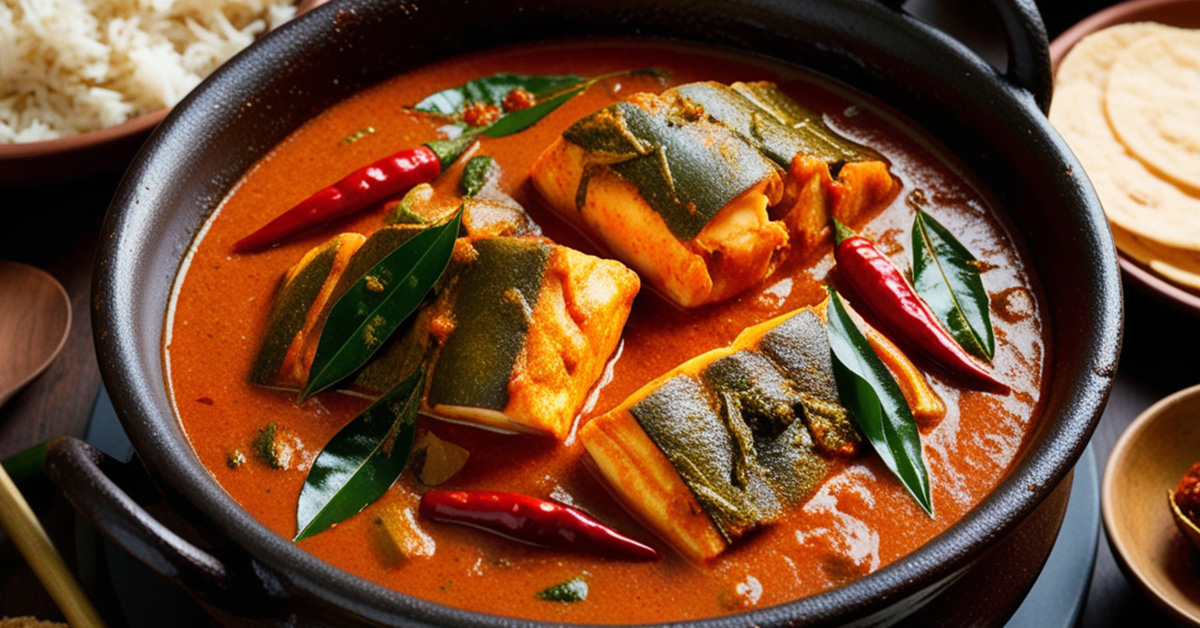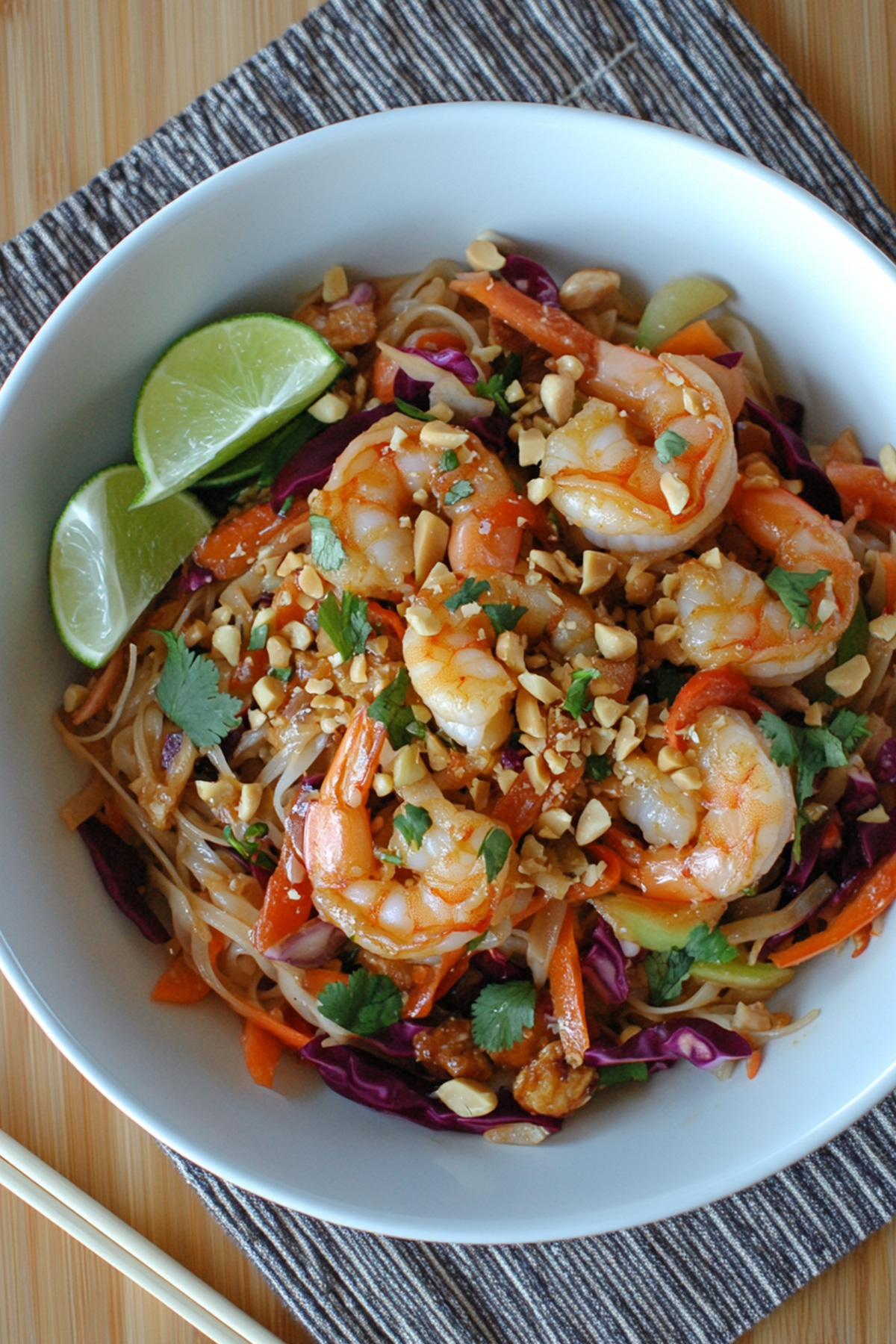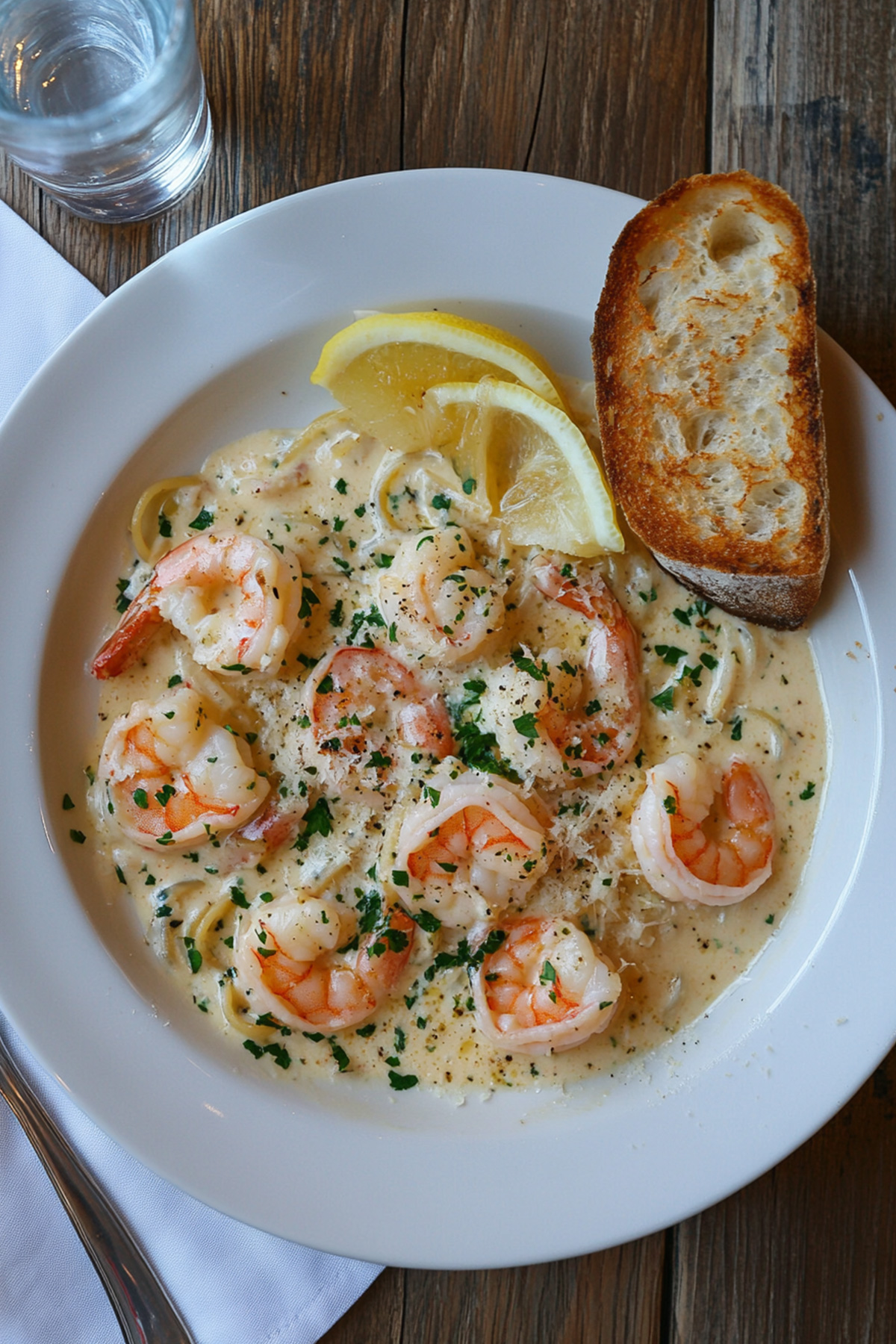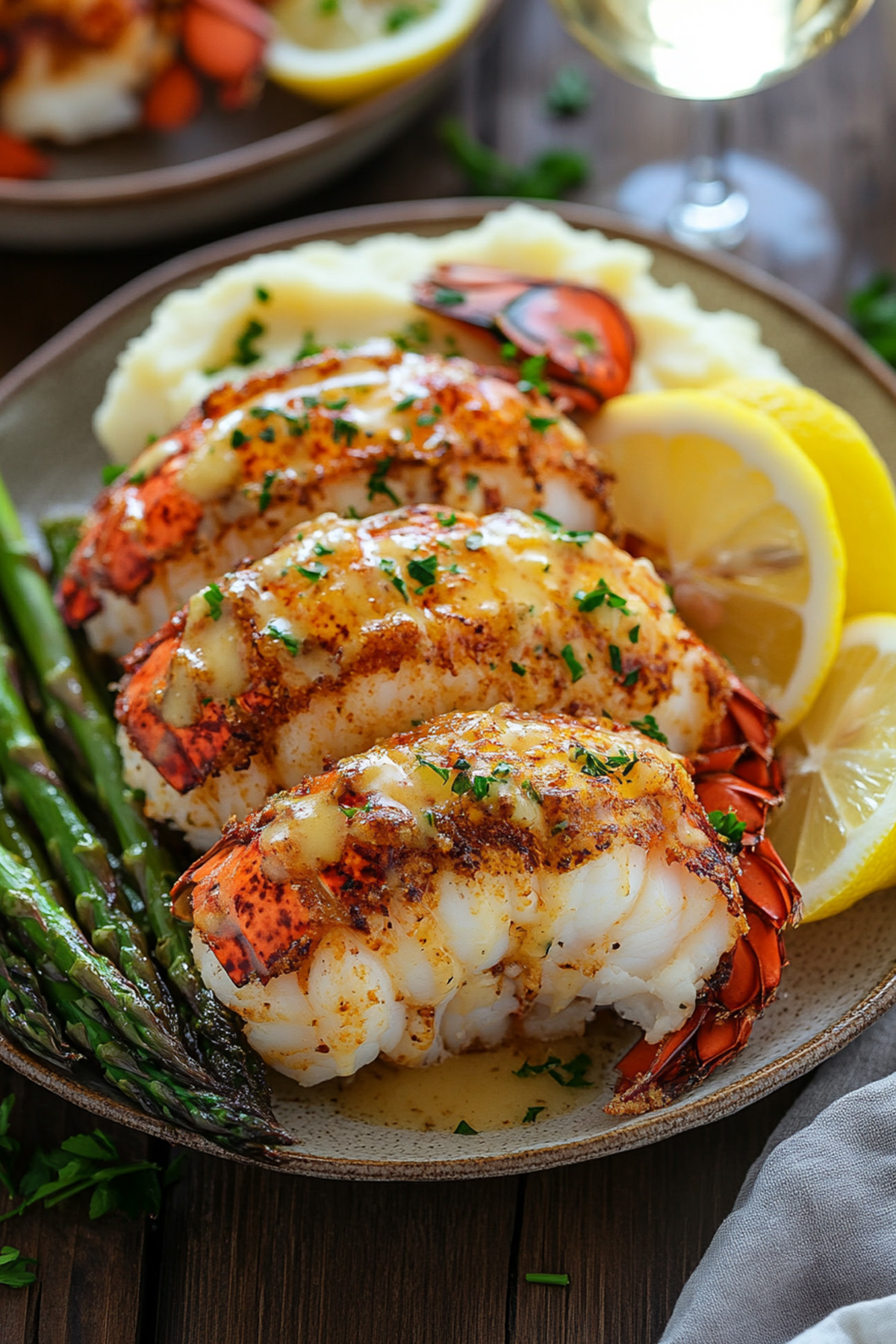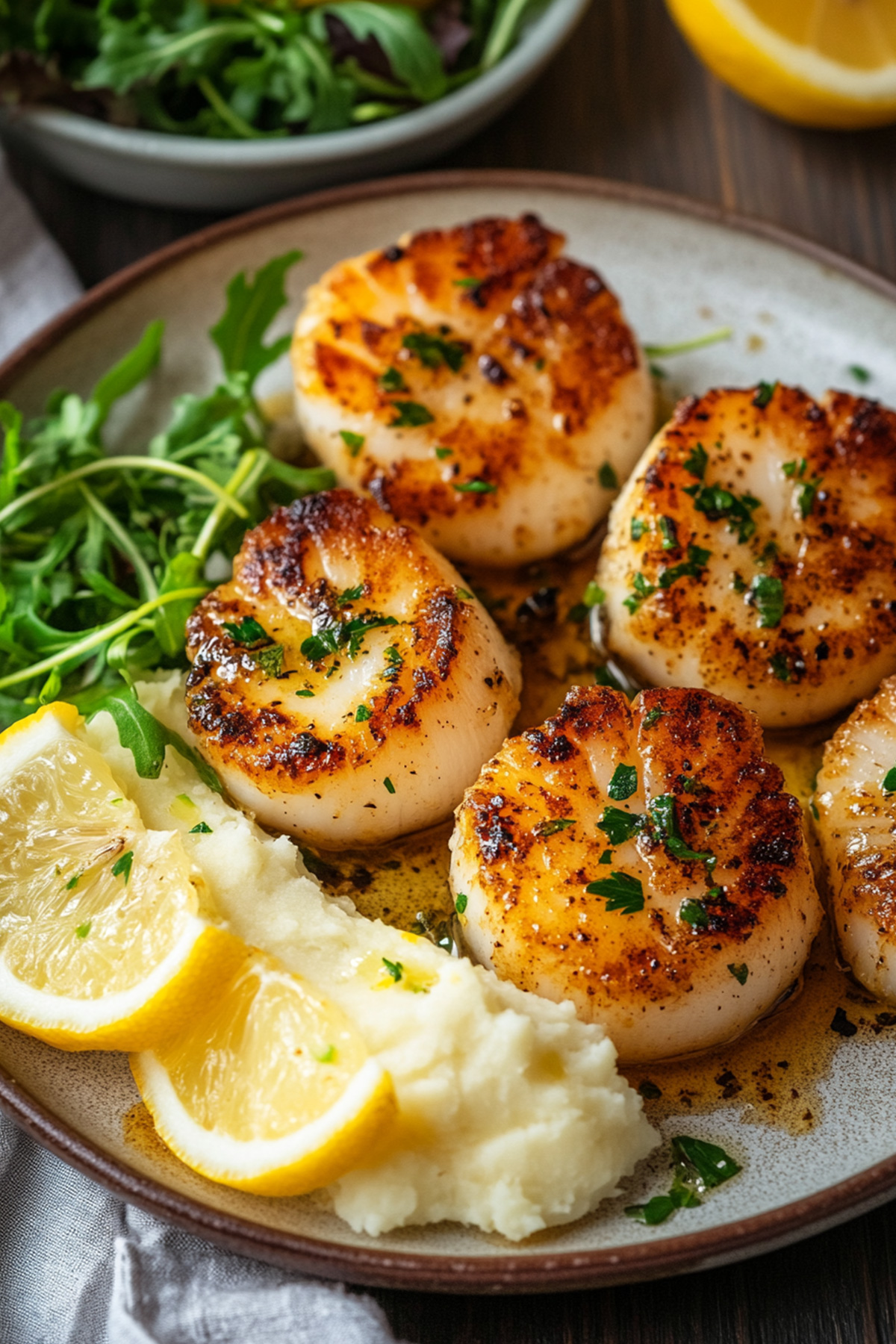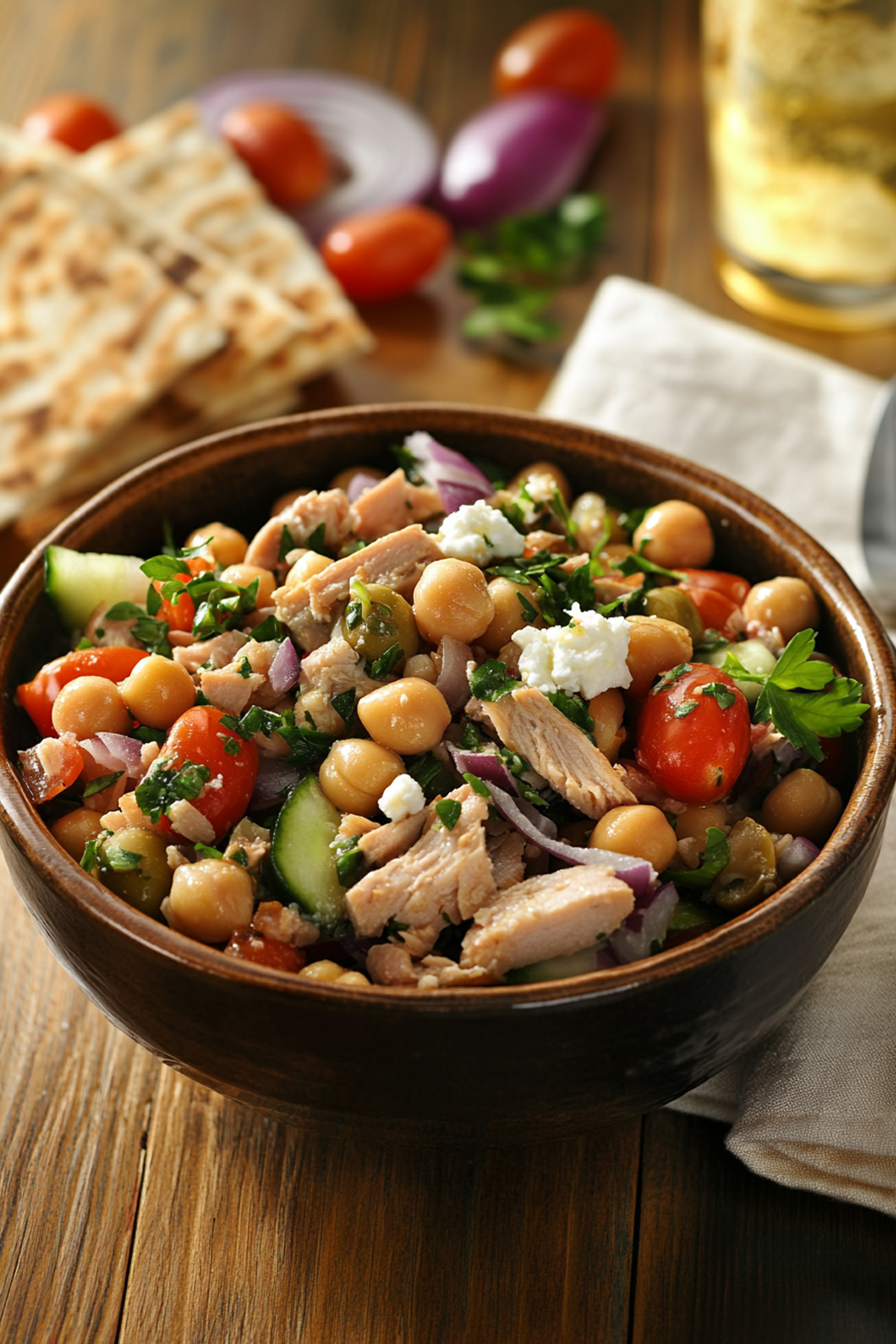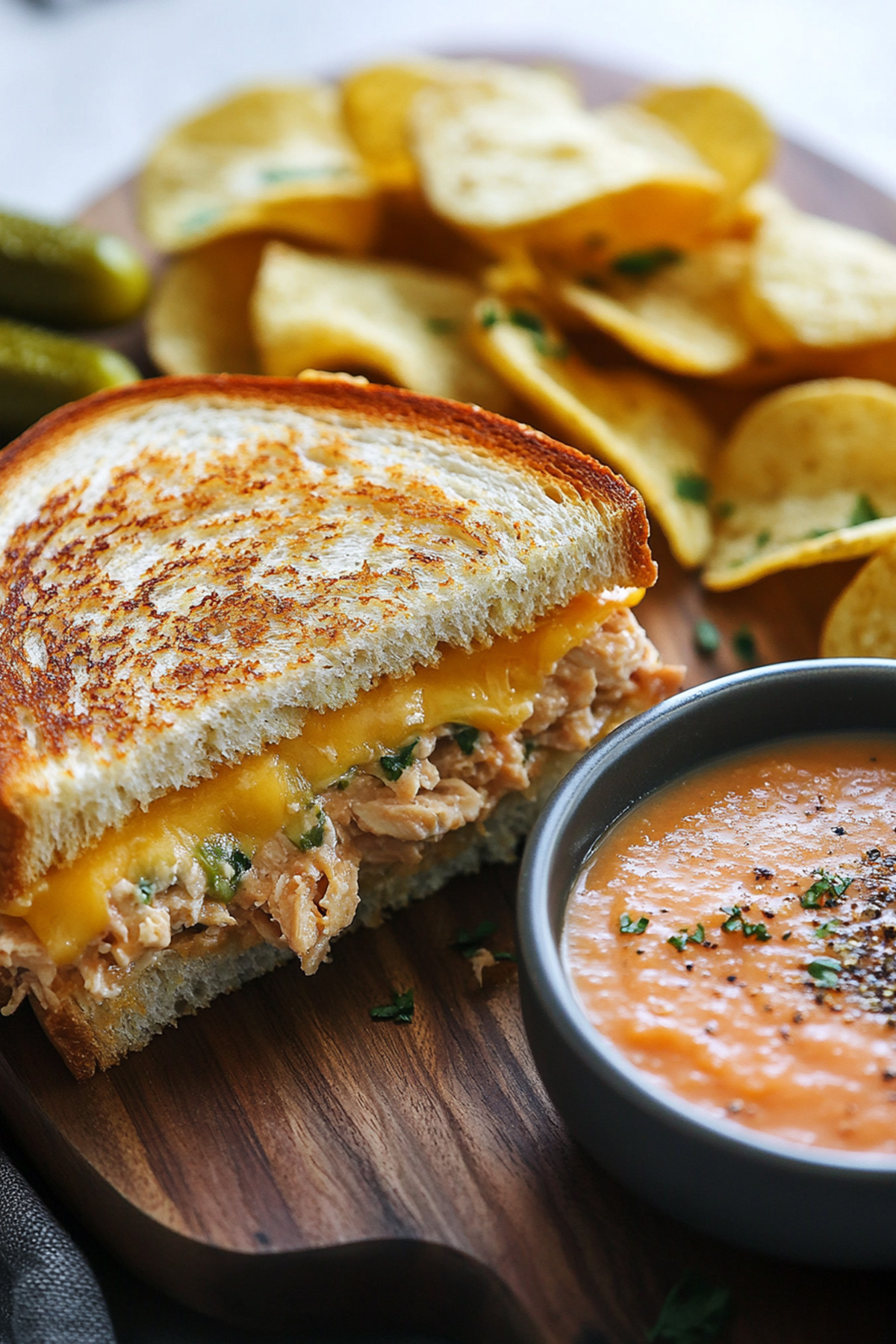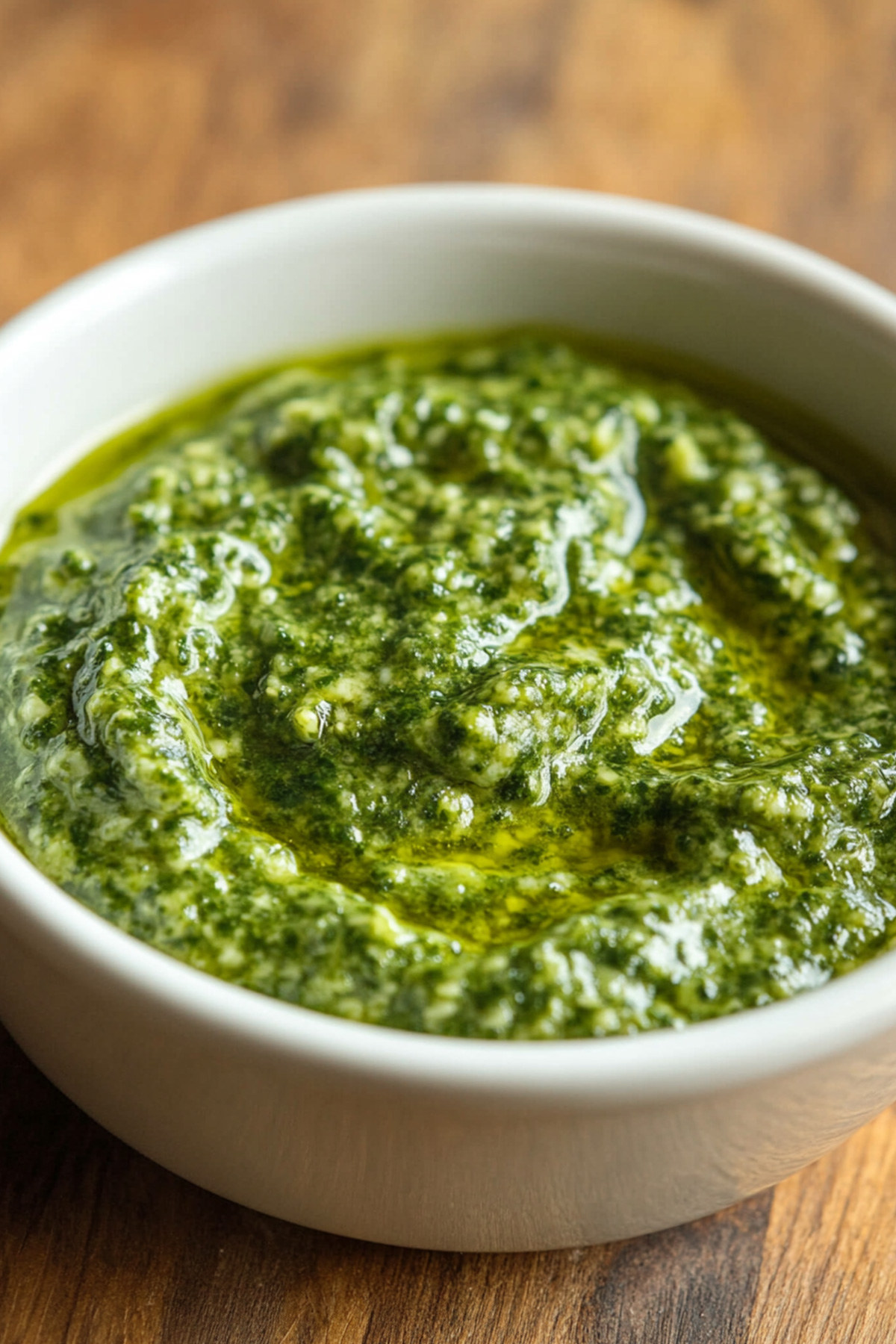Disclosure: As an Amazon Associate and participant in other affiliate programs, we earn from qualifying purchases. We only recommend products we believe will provide value to our readers.
The Kerala Fish Curry Recipe is a culinary gem from India’s coastal paradise. There’s a certain magic that envelops Kerala, where lush green landscapes meet the azure waves of the Arabian Sea, and where every meal tells a story steeped in rich tradition. This vibrant curry stands out—a symphony of flavors that dances on your palate with its spicy and tangy notes. Imagine succulent pieces of fresh fish simmering in a luscious coconut gravy infused with aromatic spices; each bite transports you to sunlit shores where fishermen haul in their daily catch.
In this article, we will guide you through an authentic recipe that encapsulates the essence of Kerala’s culinary heritage. Get ready to explore the seven simple yet transformative steps to create your very own seafood delight right in your kitchen. Whether you’re a seasoned cook or just starting out, this dish promises to elevate your dining experience and ignite your senses with its bold flavors. Let’s dive into this delectable journey and uncover how to bring a taste of Kerala’s coastline into your home!
Table of Contents
Introduction: Exploring Kerala’s Culinary Heritage
Nestled between the Western Ghats and the Arabian Sea, Kerala is a treasure trove of culinary delights that reflect its rich cultural tapestry. The state’s cuisine is not merely about flavors; it’s an intricate narrative shaped by centuries of trade, migration, and tradition. From the coconut-laden curries to the aromatic rice dishes, each meal served in Kerala tells a story steeped in history and influenced by diverse communities—be it Persian traders, Dutch colonizers, or local agrarian cultures.
What truly sets Kerala apart is its unique approach to ingredients. Locally sourced and often seasonal, Keralite cooking showcases a harmonious relationship with nature. The use of spices like cardamom, cloves, and turmeric not only imbues dishes with distinctive tastes but also reflects ancient practices where food was seen as medicine. This holistic philosophy elevates Kerala’s culinary offerings beyond mere sustenance—it’s an experience intertwining health benefits with gastronomic pleasure. As one savors dishes like puttu or appam accompanied by soulful coconut stew, there’s an unmistakable sense of connection to the land and its people that lingers long after the last bite.
History of Fish Curry in Kerala
The history of fish curry in Kerala is as vibrant and intricate as the region’s diverse culture and stunning landscapes. Pre-colonial times saw fishing communities deeply integrated into Kerala’s ecological fabric, with families passing down their culinary practices through generations. The monsoon seasons brought forth an abundance of fish, not just sustenance but a vital part of local rituals and daily life. This intersection of geography and tradition forged a unique identity for fish curry, characterized by the use of locally sourced ingredients such as coconut oil, tamarind, and an array of spices that danced on the palate.
With the advent of trade routes along the Malabar coast, influences from both Arab traders and European colonial powers transformed traditional recipes. Spice merchants introduced new elements like fenugreek and mustard seeds that enhanced flavors while health benefits remained at the forefront. Each district within Kerala boasts its own signature variations—Kottayam’s spicy mango fish curry or Cochin’s aromatic Alleppey-style preparations reflect regional identity blended with cultural exchanges over centuries. Today, cooking fish curry is not merely about nourishment; it symbolizes communal ties where families gather to honor ancestral recipes passed down through storytelling rich in historical significance—a living legacy that continues to shape contemporary Keralite cuisine.
Popular Variations Across Different Regions
Culinary variations often reflect the geography and culture of a region, resulting in unique flavors and methods that delight the palate. For instance, take pizza: while traditional Neapolitan pizza boasts a thin crust with San Marzano tomatoes and mozzarella di bufala, Chicago-style deep-dish offers an entirely different experience with its hearty layers of cheese and chunky tomato sauce. These regional adaptations highlight not only local ingredients but also the historical context of food preparation—how immigrants transformed their recipes in new environments to suit local tastes.
Similarly, consider curries around the world; each iteration tells a story woven from local spices and cooking techniques. In India, you might encounter rich gravies laden with complex spice blends like garam masala or turmeric, whereas Thai curries rely on fresh herbs such as lemongrass and galangal for brightness. The result? A vibrant tapestry where each bowl holds distinct narratives about land, climate, and culture—a delicious reminder that food is not merely sustenance but a reflection of our shared human journey across time and space.
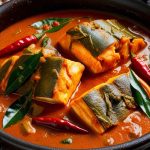
Kerala Fish Curry Recipe
- Total Time: 40 minutes
Description
Kerala, known for its rich culinary heritage, offers a variety of flavorful dishes. Among them, the Traditional Kerala Fish Curry stands out with its vibrant spices and creamy coconut milk. This dish is perfect for seafood lovers and pairs wonderfully with steamed rice or appam. Here’s how to prepare this delicious recipe.
Ingredients
- 500g fish (kingfish or pomfret, cleaned and cut into pieces)
- 2 tablespoons coconut oil
- 1 teaspoon mustard seeds
- 1 onion (sliced)
- 2 green chilies (slit)
- 1 tablespoon ginger-garlic paste
- 2 medium tomatoes (chopped)
- 1 teaspoon turmeric powder
- 1 tablespoon red chili powder
- 1 cup coconut milk
- Salt to taste
- Fresh curry leaves (a handful)
- Juice of half a lime
Instructions
1. Heat the Oil
Begin by heating 2 tablespoons of coconut oil in a pan over medium heat. Once the oil is hot, add 1 teaspoon of mustard seeds and allow them to splutter, releasing their aromatic flavor.
2. Sauté Aromatics
Next, add the sliced onion and slit green chilies to the pan. Sauté these ingredients until the onions turn translucent, creating a fragrant base for your curry.
3. Add Garlic & Tomato
Incorporate 1 tablespoon of ginger-garlic paste into the mixture and cook for about a minute until fragrant. Follow this by adding 2 chopped tomatoes; cook until they soften completely.
4. Spice It Up
Now it’s time to enhance the flavors! Mix in 1 teaspoon of turmeric powder, 1 tablespoon of red chili powder, and salt to taste. Allow this mixture to cook for an additional 2 minutes so that the spices meld beautifully.
5. Add Fish
Gently place your fish pieces into the pan, ensuring each piece is well-coated with the spice mixture. Be careful not to break them apart while mixing.
6. Pour Coconut Milk
Pour in 1 cup of coconut milk along with a handful of fresh curry leaves. Reduce the heat and let it simmer on low for about 10 minutes or until the fish is cooked through and tender.
7. Finish & Serve
Before serving your delectable fish curry, squeeze juice from half a lime over it for a touch of acidity that brightens up the dish.
- Prep Time: 15 minutes
- Cook Time: 25 minutes
- Category: Seafood
- Cuisine: American
Tips for Perfecting the Kerala Fish Curry Recipe
When perfecting a recipe, meticulous attention to ingredient quality can make all the difference. Opt for fresh, seasonal produce and high-quality pantry staples; for example, using organic herbs can elevate a dish’s flavor profile in ways that dried alternatives simply can’t match. Additionally, don’t shy away from experimenting with flavor enhancements like acid or fat at various stages of cooking—consider finishing a dish with a splash of vinegar or a drizzle of flavored oil to add depth and brightness.
Another often-overlooked aspect is mastering technique over simply following instructions. Understanding the “why” behind each step empowers you to adjust based on your results. For instance, knowing when to sauté versus simmer can dramatically change texture and taste. Engage with your senses; taste as you go, allowing adjustments based on aroma, color, and mouthfeel to take precedence over rigid measurements. Ultimately, perfecting your recipe isn’t just about precision—it’s an adventure in intuition and creativity that leads to dishes uniquely tailored to your palate.
Here are some tips to help you perfect your Kerala Fish Curry:
- Choose the Right Fish: Opt for firm, white-fleshed fish like kingfish or pomfret. These varieties hold up well during cooking and absorb the spices beautifully. Ensure the fish is fresh, as this will significantly enhance the flavor of your curry.
- Heat the Oil Properly: Make sure your coconut oil is heated to the right temperature before adding the mustard seeds. The oil should be hot enough to make the seeds splutter and release their nutty aroma. If the oil isn’t hot enough, the mustard seeds may not pop, which can affect the flavor.
- Perfect Sautéing: When sautéing the onions and green chilies, cook them until the onions are just starting to brown. This caramelization adds depth to the curry. Avoid overcooking, as burnt onions can introduce bitterness.
- Ginger-Garlic Paste: Sauté the ginger-garlic paste until it’s fragrant but not browned. Browning can give a burnt taste, which will overpower the curry’s delicate flavors.
- Spice Balance: Adjust the amount of turmeric and red chili powder to suit your taste preference. If you prefer a milder curry, reduce the chili powder. Ensure the spices are cooked well before adding the fish to allow their flavors to fully develop.
- Gentle Cooking: When adding the fish, gently stir to coat the pieces without breaking them. Over-stirring can cause the fish to flake apart and result in a less visually appealing curry.
- Simmer Slowly: Allow the curry to simmer on low heat after adding the coconut milk. This gentle cooking ensures the fish remains tender and the flavors meld together without the risk of curdling the coconut milk.
- Finishing Touch: Adding lime juice at the end not only brightens the dish but also balances the richness of the coconut milk. Adjust the lime to taste, as too much can overwhelm the curry.
- Garnish Wisely: Fresh curry leaves add a wonderful aroma and flavor. If you can’t find fresh leaves, consider using dried ones or a curry leaf substitute.
- Let It Rest: Allow the curry to sit for a few minutes after cooking. This resting time helps the flavors meld and intensify. Reheat gently before serving if needed.
By following these tips, you’ll enhance the authenticity and flavor of your Kerala Fish Curry, making it a delightful and memorable dish.
Side Dishes That Complement Fish Curry
Pairing side dishes with fish curry is all about striking the right balance of flavors and textures. Consider a light, tangy cucumber salad adorned with fresh mint and a sprinkle of lime juice; this not only cuts through the rich spices of the curry but also adds a refreshing crunch. Another option that truly shines is coconut rice, where the creaminess of coconut milk harmonizes beautifully with the aromatic herbs typically found in fish curries.
For those seeking something heartier, roasted vegetables drizzled with a hint of sesame oil can create an exquisite contrast. Think sweet bell peppers and eggplant caramelized to perfection; their natural sweetness enhances the dish without overpowering it. Lastly, don’t overlook crispy papadums or homemade naan for textural delight—they serve as perfect vessels for scooping up both curry and sides while adding an inviting crispness that elevates any meal experience. Mixing these elements together can result in an unforgettable dining experience that celebrates diverse flavors on your plate!
Health Benefits of Kerala Fish Curry
Kerala Fish Curry, often celebrated for its vibrant flavors and aromatic spices, is also a treasure trove of health benefits. Rich in omega-3 fatty acids, the primary ingredient—fish—contributes significantly to heart health by lowering blood pressure and reducing the risk of cardiovascular diseases. Additionally, the use of fresh coconut milk not only adds creaminess but also provides medium-chain triglycerides (MCTs) that can boost metabolism and support weight management.
The blend of spices such as turmeric, fenugreek, and curry leaves further enhances this dish’s nutritional profile. Turmeric contains curcumin, renowned for its anti-inflammatory properties and potential to improve cognitive function. Meanwhile, curry leaves are rich in antioxidants and may aid digestion while regulating blood sugar levels. Together with fish as a lean protein source, Kerala Fish Curry emerges not just as a delicious meal but as an ally for nurturing overall well-being amidst the hustle of modern life.
Cultural Significance and Celebrations Involving Fish Curry
Fish curry holds a profound cultural significance in many coastal regions across the globe, acting as a culinary bridge between communities and their maritime heritage. In countries like India and Thailand, the dish transcends mere sustenance, woven deeply into the fabric of traditional celebrations. For instance, during annual harvest festivals, families gather to prepare elaborate fish curries that celebrate not just the bounty of the sea but also time-honored recipes passed down through generations. These moments foster community bonds as neighbors share spices and stories while preparing a beloved dish that gleams with shared memories.
Moreover, fish curry often symbolizes adaptability and resourcefulness—a reflection of how different cultures have embraced local ingredients to create unique variations. In Sri Lanka, you might encounter curry infused with tangy tamarind or coconut milk, showcasing an inspired blend of flavors that tells a tale of cultural exchange. Celebrations involving fish curry often revolve around significant life events such as weddings or religious ceremonies, where serving this dish signifies abundance and good fortune. As people come together to savor these regional variations during festive gatherings, they reaffirm not just their connection to tradition but also their identity within a globally interconnected culinary landscape.
Conclusion: Savoring the Flavors of Tradition
In a world increasingly dominated by fast food and globalized flavors, savoring traditional cuisines offers a refreshing antidote. Each dish tells a story, not just of its ingredients but of the culture that birthed it. Consider how recipes are passed through generations: they become repositories of history, connecting us to our ancestors in ways that transcend mere consumption. The act of preparing and sharing these dishes transforms meals into rituals, where family bonds strengthen around the warmth of familiar spices and aromas.
Furthermore, embracing traditional flavors invites us to explore the agricultural heritage tied to each recipe. Local foods are often harvested at their peak, allowing for vibrant tastes and nutrition that processed alternatives can’t match. With every bite taken from well-loved dishes passed down through time, we participate in an enduring dialogue about sustainability and community ties—advocating for local farmers who keep these practices alive amidst modern challenges. Savoring tradition is more than a culinary choice; it’s an enriching experience that nourishes both body and soul while drawing us closer to our roots and one another.

